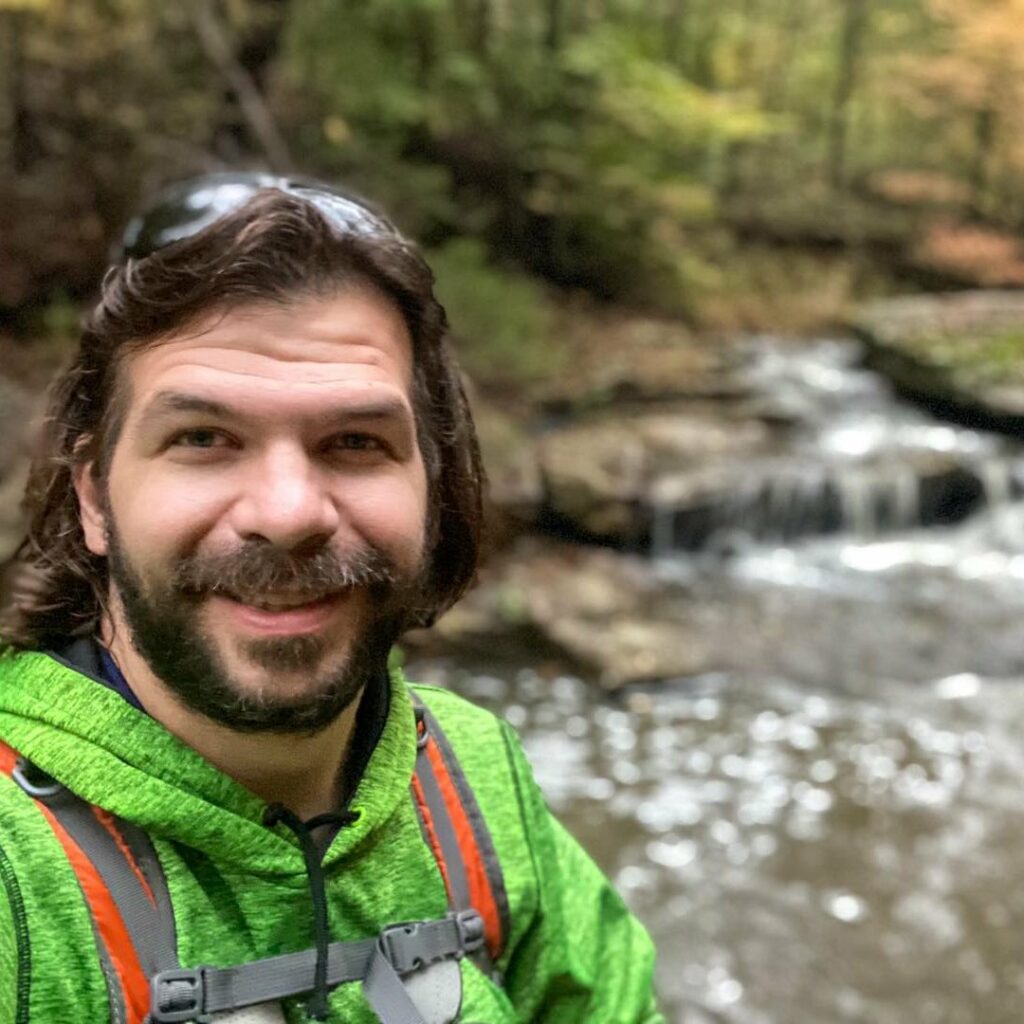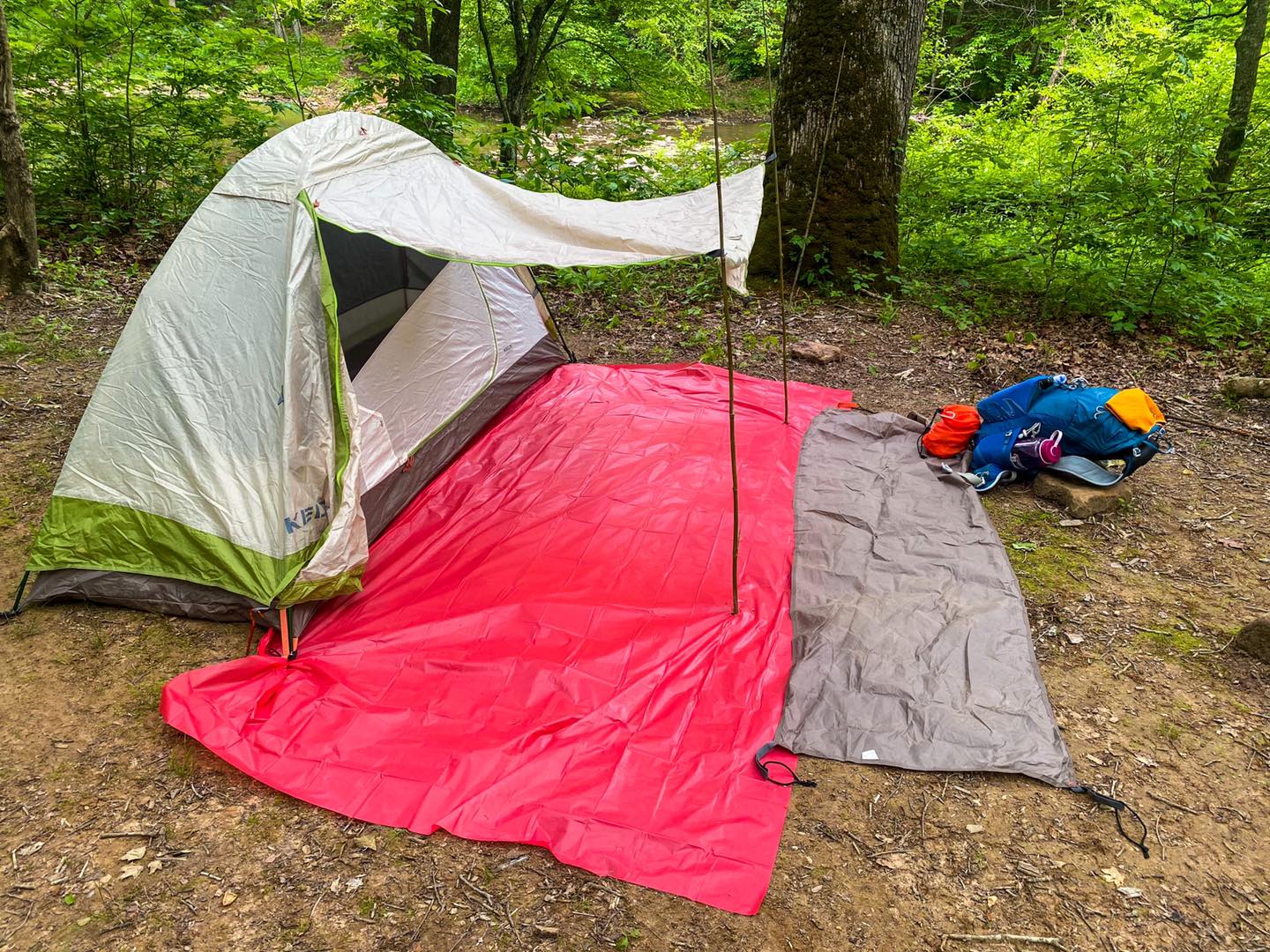How to Try Solo Dispersed Wilderness Camping for the First Time
Have you ever been solo dispersed wilderness camping?
The chance is, if you’re on this article, you haven’t tried it. Or maybe you have, and you’d like more advice to ensure the next time is better. Either way, this article was created with you in mind and to give you the best possible advice for camping in the wilderness all by yourself.
Wilderness camping is definitely not for everyone. Different areas will have different factors to consider, too.
For example, the Shawnee National Forest doesn’t have a bear population, so that factor isn’t really a concern for solo dispersed wilderness camping. But black bear populations are present if you’re camping in the wilderness areas of Mark Twain National Forest.
You’ll need to research those types of factors to take special precautions and considerations based on the area where you’re located.
Solo Dispersed Wilderness Camping Research
The first thing you need to do before you attempt to solo dispersed wilderness camping is to thoroughly research the area where you plan to camp.
Make sure the wilderness area is on public land and allows camping. Most wildernesses on National Forest land allow backcountry dispersed camping if traveling by foot or equine. Motorized vehicles and bicycles are typically not allowed in wilderness areas.
There might be special guidelines and regulations for the particular wilderness area you wish to camp in. Be sure to check out the website of the parent public land manager of the wilderness as part of your research.
Make sure you research the area you plan to hike and camp at. How are trail reviews online?
Check the weather and ensure you don’t go if conditions are unfavorable for camping. Don’t try camping during thunderstorms or major winter events.
If it’s been really dry, consider wildfire conditions. Don’t make a fire if there are warnings or bans out for fires.
Consider the terrain, trail conditions for the season, venomous snakes, wild animals you may encounter, and availability of resources (like creeks for filtering water) before setting out.
Always designate someone as a reporting party if you don’t return home. Tell somewhere where you are going. Print out a map and circle the area you plan to visit. If you go missing, that information will be vital to first responders looking for you.
Consider getting a PLB (Personal Locator Beacon) and a subscription just in case you need help, can’t move or are so lost you don’t know what to do.
Pack the Right Gear for Your Adventure
Ensure you have the right gear for a solo dispersed wilderness camping trip.
This should include the following:
- Tent or hammock
- Sleeping bag or quilt
- Sleep pad and pillow
- Cooking items (pocket stove, fuel canister, lighter, cooking cup, spork, etc.)
- Plenty of food and snacks (get stuff with a lot of carbs to fuel you)
- Plenty of water (this should be your heaviest item)
- Electrolyte pouches
- Water filter (use it before you go to make sure it works)
- Small first aid kit (with essential supplies that you know how to use)
- Extra layers and rain poncho
- Multi-tool and a knife
- Navigation (GPS, an app for phones, paper maps, compass, etc.)
- Headlamp with extra batteries
- Bear spray and bear can (if in bear country)
A note on water. Be sure to make sure you either bring enough water to last you or that it has rained enough that creeks in the wilderness are full enough to filter water when you need it. Wilderness hiking conditions are typically rugged and will often require you to consume more food and water so you don’t dehydrate or bonk out.
Sometimes, you may have to acquire a permit to camp or park at the trailhead. Before you venture off, check with the area public land manager or district ranger.
It’s good to go for items that are lighter in weight. These items are typically more expensive, but they can help save you wear, tear, and stress on your body as you carry all your gear.
Wear appropriate hiking clothing and footwear. Be sure to treat clothing and gear with a tick defense such as Permethrin or Lemon Grass if you prefer something without chemicals. Use bug spray and sunblock as needed.
Leave No Trace When Solo Dispersed Wilderness Camping
When you do solo dispersed wilderness camping, try to tread lightly and Leave No Trace.
That means you should stay on the designated trail as much as possible. Don’t take unauthorized user trails or user-made switchbacks. Taking these unauthorized trails can create erosion problems requiring trail maintenance and money spent on it.
If you have to poop in the wilderness, dig a cat hole first and then bury your waste after you’re done. Many Leave No Trace advocates recommend that you take used toilet paper back out of the wilderness and dispose of it properly. You can always put it in a sealed bag with some teabags in it to help control odors.
If you make a fire, make sure it isn’t too dry, or there is a ban in place. After finishing your fire, put it out until it is cold to touch. Dismantle any fire rings that you’ve created after confirming the fire is completely out. Only you can prevent wildfires.
Don’t move rocks or flip natural debris unless you need it to make a fire ring and a fire. Habitat lives under those rocks and natural debris. They depend on these natural items to live. The wilderness is their home. We’re just visiting.
Don’t stack rocks. Don’t create cairns. They are unethical.
Don’t harass the wildlife.
Pack out what you pack in.
Leave an area better than you found it and practice Leave No Trace.
Wilderness Hiking and Camping Safety
Take safety considerations in mind before you go on your camping trip.
Nature is rugged, and there are no artificial safety controls in the wilderness.
The most important safety tip out there is to use common sense. Using common sense will go a long way for hiking and solo dispersed wilderness camping activities. You can avoid most risks and hazards by using your better judgment.
The second most important safety tip is to watch your step. Most top hazards can be completely prevented if hikers watch their steps. Watching your step can prevent you from stepping on a venomous snake, walking into a ground bee’s nest, falling from a cliff, or tripping into the river. If you don’t watch your step, you’re inviting danger to occur.
Be mindful of where you set up camp at. Look for loose rocks or widow makers (dead trees) that could fall on you. Make sure you’re not in a flooding area. Try to be mindful of potential wildfire incidents if your fire gets out of control.
Read the rules and safety considerations on the public land management website before venturing into the area, and make sure you follow them.
As you can see, solo dispersed wilderness camping isn’t as difficult as you might think it is. The worst part will be the bumps in the night, but for the most part, those sounds are natural, and you’ll probably be just fine. If you’ve enjoyed this article, please consider Buying Me a Pizza for writing it. Subscribe to my free monthly newsletter for more hiking tips.
Please Support Hiking with Shawn
Alrighty folks, I hope you have enjoyed this content. I provide it for free and it takes a while to create. If you would be so kind enough to support my efforts, you can do so by sharing this post with others, especially on social media. Be sure to subscribe to my YouTube Channel to see my latest videos, shorts and live streams. Follow me on Facebook, Instagram, and Twitter for unique content that you will only find on those pages. You might also join my Southern Illinois Hiking & Outdoor Resources Group on Facebook, too!
You can also support me by becoming a Patreon Supporter for as little as $3/month and you can cancel anytime (no contracts or catches). Patreons get access to extra features, exclusive articles, sticker packs, gifts and more. Consider buying official Hiking with Shawn Merchandise as another way to support me. I spend a lot of money on Hiking with Shawn and because of extremely high public land permit fees, I make very little money in return so everything helps.
Thanks again for checking out another one of my articles and until next time, I’ll see you on the trail!

Shawn Gossman
Founder, Hiking with Shawn
Howdy folks! My name is Shawn Gossman and I founded Hiking with Shawn. I’m an avid hiker, cyclist and outdoorsman here in the Shawnee National Forest. I was born and raised in Southern Illinois and never want to leave. Click here to learn more about Shawn Gossman



Trackbacks/Pingbacks